DC Plastic Case Circuit Breaker
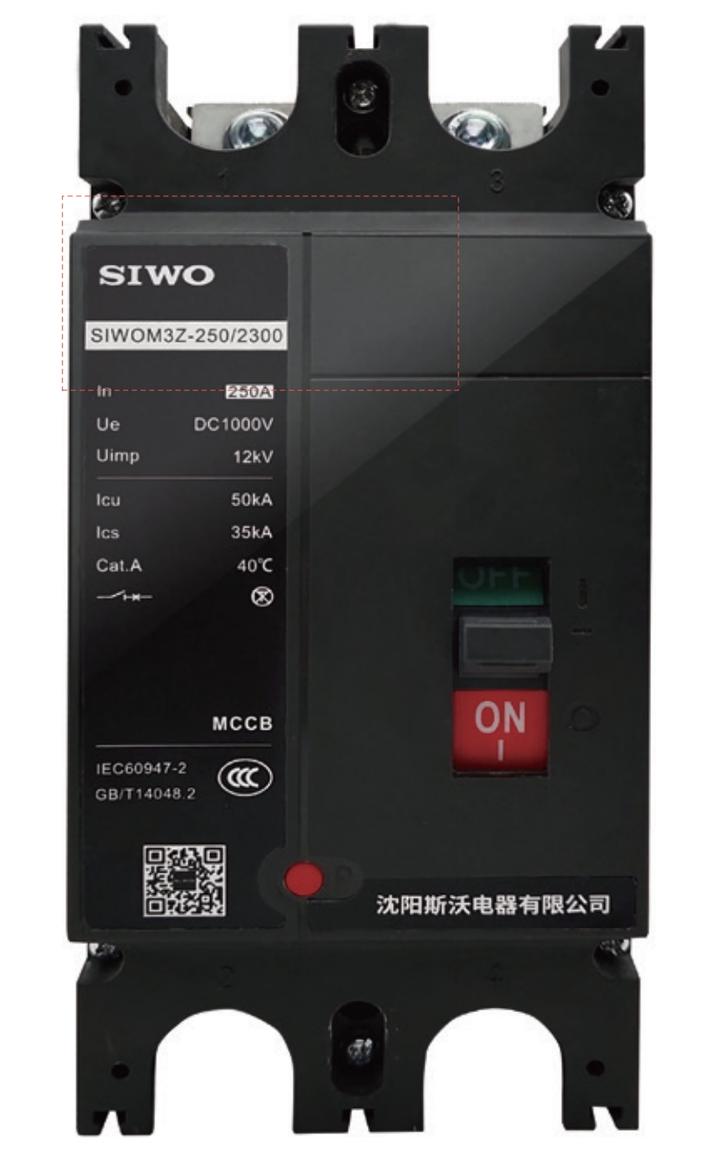
DC Molded Case Circuit Breaker: ZSEE M3Z series is a DC product series launched by our company, suitable for low-voltage distribution networks with a rated operating voltage of DC1000V, DC1500V, and a rated operating current of 63-500A.
DC molded case circuit breakers can be used in type C, A, and B grounding systems, mainly applied in combiner boxes, batteries, and PCS cabinets in light storage systems.
Compliance Standards
National Standards
GB/T14048.1 “Low-voltage switchgear and controlgear – General rules”
GB/T14048.2 “Low-voltage switchgear and controlgear – Circuit breakers”
International Standards
IEC60947-1 “Low-voltage switchgear and controlgear – General rules”
IEC60947-2 “Low-voltage switchgear and controlgear – Circuit breakers”
Certification
The ZSEE M3Z series DC molded case circuit breaker has passed the compulsory certification product conformity self-declaration.
Operating Environment
Installation altitude does not exceed 2000m;
Ambient air temperature is -40°C to 70°C, and in environments where the temperature exceeds the baseline of 40°C, derating is required. The 24-hour average should not exceed +35°C. The relative humidity of the air at the installation location: at a maximum temperature of +40°C, the humidity should not exceed 50%, and higher relative humidity is allowed at lower temperatures, such as 80% at 25°C. Special measures should be taken to handle occasional condensation caused by temperature changes.
The breaker is resistant to the effects of humid air, salt spray, oil mist, and mold;
Installed in locations free from rain and snow exposure;
Pollution level: 3;
Installation category: The installation category for the main circuit is IV, and for auxiliary and control circuits not connected to the main circuit, it is II.
ZSEE M3Z-250/2 Dimensions and Installation Size (Unit: mm)
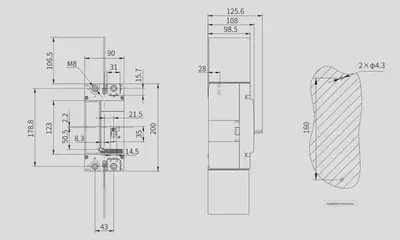
ZSEE M3Z-250/4 Dimensions and Installation Size (Unit: mm)
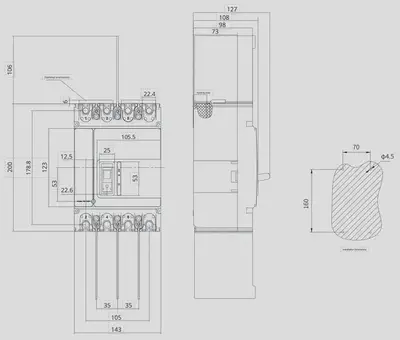
ZSEE M3Z-250/4 Short-circuit Bar Dimensions (Unit: mm) (Optional)

ZSEE M3Z-250/4 Arc Isolation Cover Dimensions (Unit: mm) (Optional)
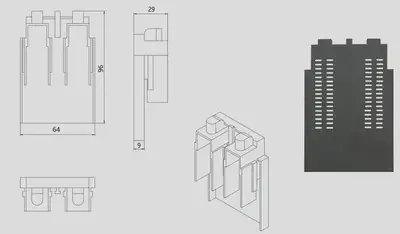
ZSEE M3Z-500/4 Dimensions and Installation Size (Unit: mm)
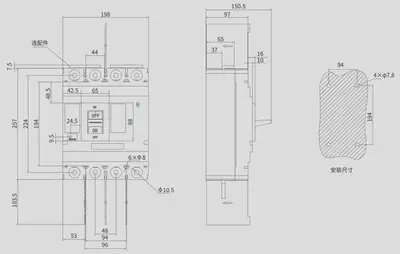
ZSEE M3Z-500/4 Short-circuit Bar Dimensions (Unit: mm) (Optional)
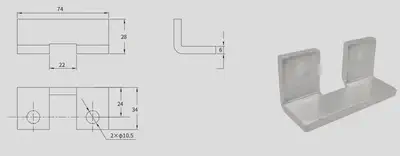
(Optional) ZSEE M3Z-500/4 Front-panel Terminal Dimensions (Thickness 8.0) (Unit: mm)
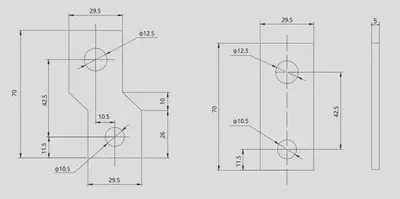
(Optional) ZSEE M3Z-500/4 Arc Isolation Cover Dimensions (Unit: mm)
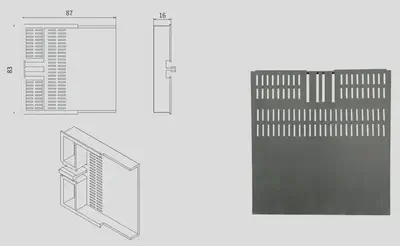
Internal and External Accessories for the ZSEE M3Z Series Circuit Breakers
Shunt Trip
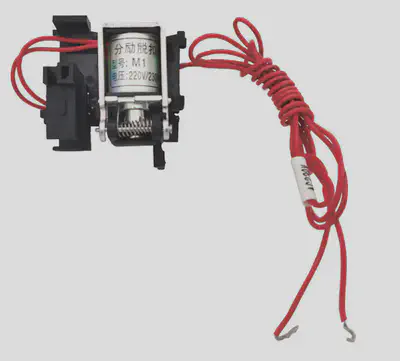
Function:
Used for remote control of circuit breaker tripping.
Principle:
The shunt trip can reliably trip the circuit breaker when the power supply voltage is between 70% and 110% of the rated control power voltage. The shunt trip is of momentary operation type, and the coil energizing time should generally not exceed 1 second, otherwise the coil may burn out. To prevent this, a microswitch is connected in series with the shunt trip coil.
Undervoltage Trip
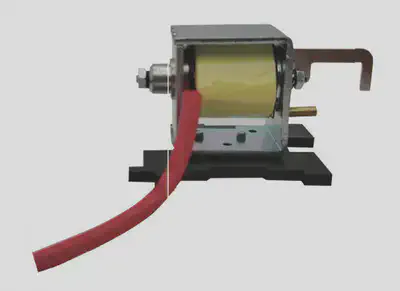
Function:
Used for undervoltage protection of circuits and power equipment.
Principle:
The undervoltage trip can reliably trip the circuit breaker when the power supply voltage drops (even slowly) to within 70% to 35% of the rated operating voltage. When the power supply voltage falls below 35% of the rated operating voltage of the trip, the undervoltage trip should prevent the circuit breaker from closing; when the power supply voltage is greater than or equal to 85% of the rated operating voltage of the undervoltage trip, the trip ensures reliable closure of the circuit breaker.
Auxiliary Contacts

Function:
Used to signal whether the circuit breaker is in the on or off state.
Principle:
When the circuit breaker opens or closes normally, the normally open and normally closed contacts of the auxiliary contact change state, indicating whether the circuit breaker is on or off.
For the 250A frame rated current molded case circuit breaker, a bridge-type contact structure is used.
The agreed heating current is 3A; for the 500A frame rated current, two normally open and two normally closed contacts can be installed, with an agreed heating current of 6A. The number of operating cycles is the same as the total number of operating cycles of the circuit breaker.
Alarm Contacts
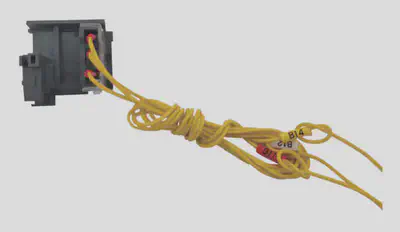
Function:
Used to output an alarm signal when the circuit breaker trips due to overload, short circuit, or undervoltage faults in the circuit.
Principle:
The alarm contact operates only after the circuit breaker trips. When the circuit breaker trips due to overload, short circuit, or undervoltage, the alarm contact changes from normally open to normally closed, triggering an indicator light, bell, buzzer, etc., to signal the tripping status. Since circuit breakers trip due to load faults infrequently, the alarm contact’s lifespan is about 1/10 that of the circuit breaker, with a working current generally not exceeding 1A.
Auxiliary Alarm Contacts
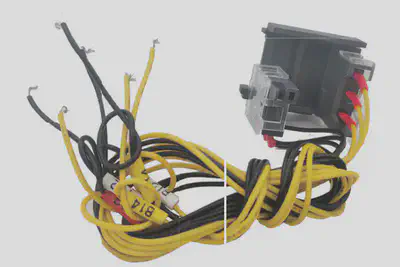
Function:
Used for signaling when the circuit breaker is on or off, and for providing an alarm signal when the circuit breaker trips due to overload, short circuit, or undervoltage faults in the circuit.
Motorized Operating Mechanism
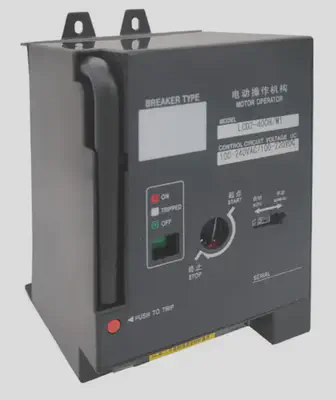
Function:
Used for remote opening and closing of the circuit breaker.
Principle:
There are two types of motorized operating mechanisms: motor-operated and magnet-operated. Both types use the same principle of engagement and rotational direction, achieved through the cam position inside the operating mechanism. When using the motor-operated mechanism, the circuit breaker can reliably close at any voltage between 85% and 110% of the rated control voltage.